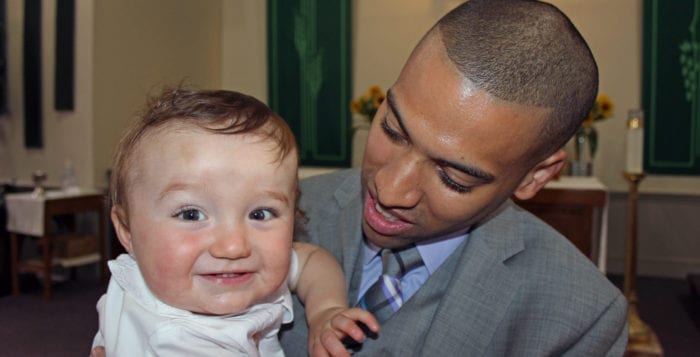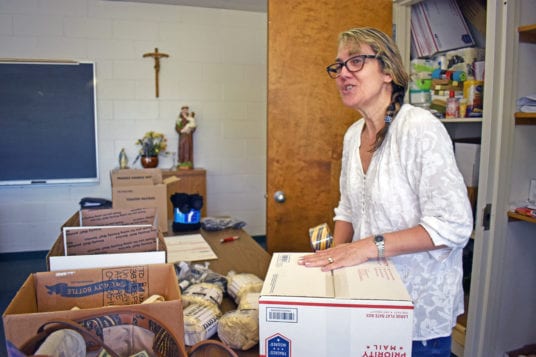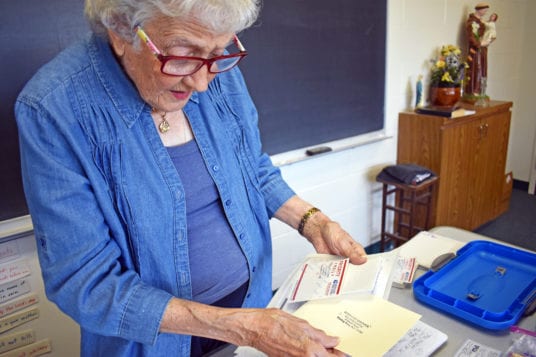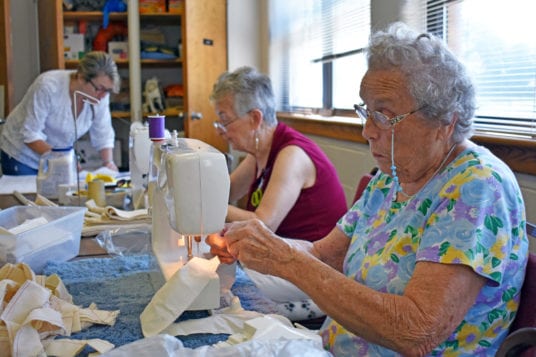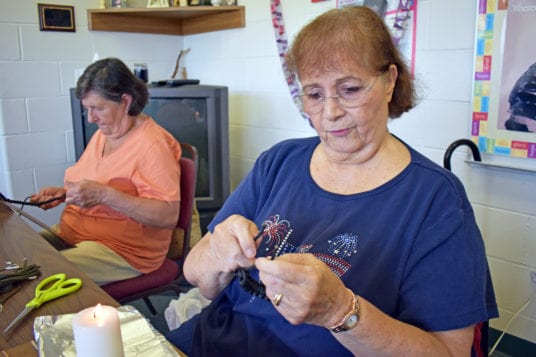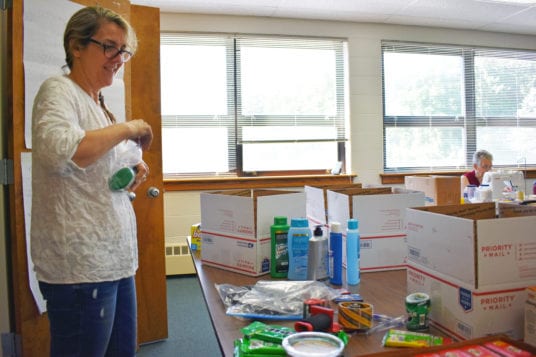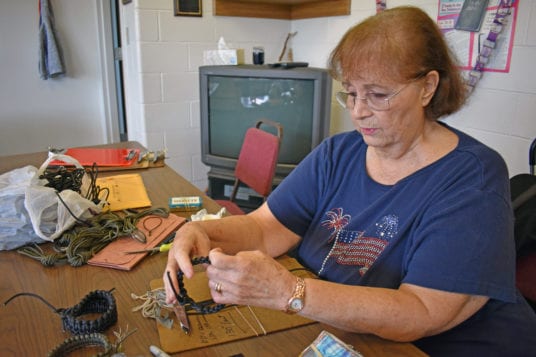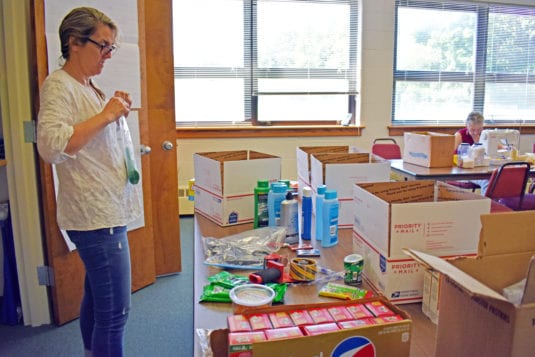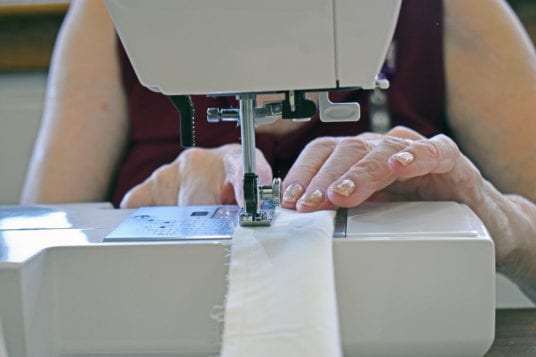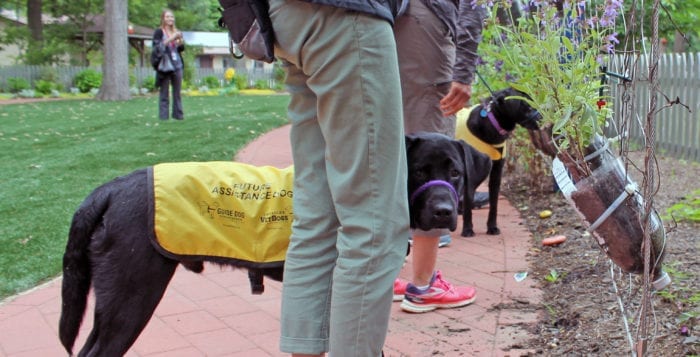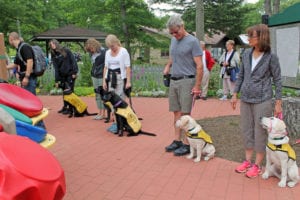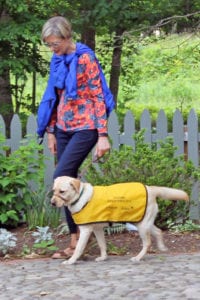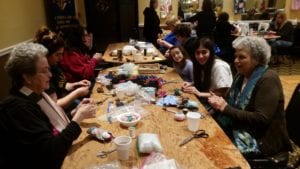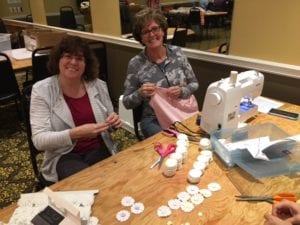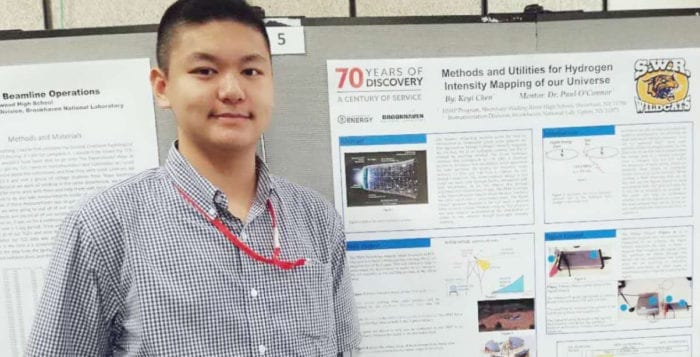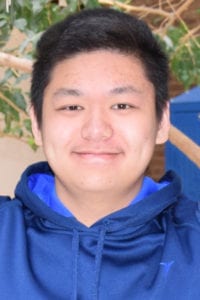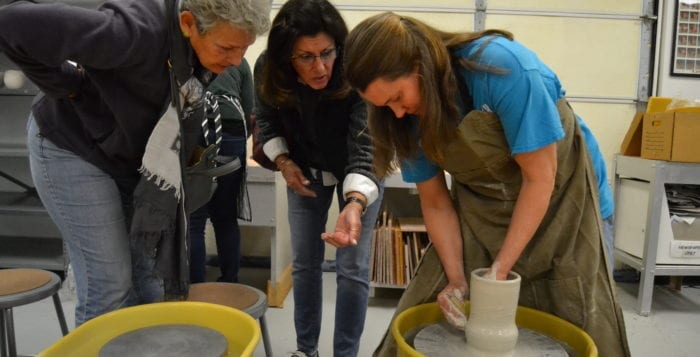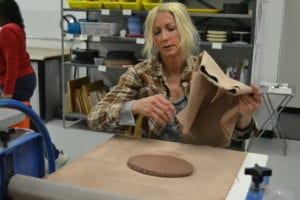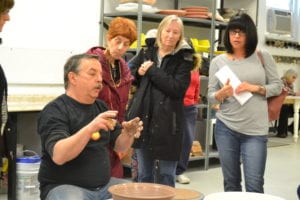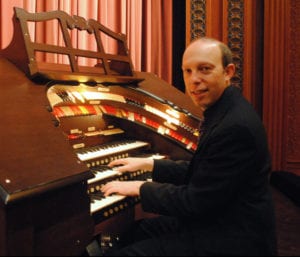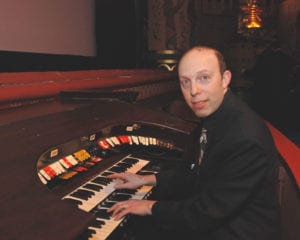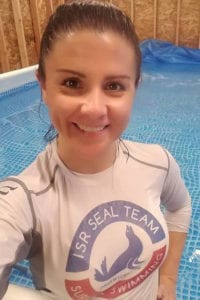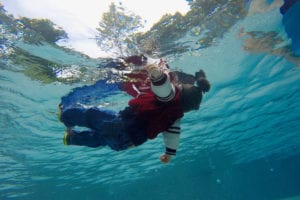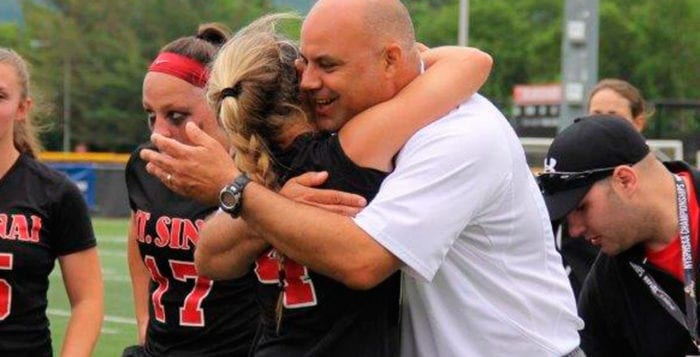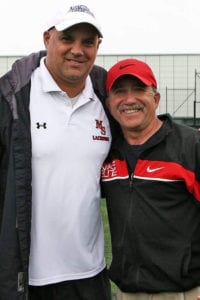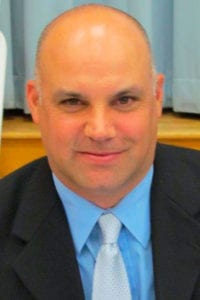Sometimes even a historian gets to enjoy a historic moment in his own life.

Members of the Three Village Historical Society celebrated Beverly Tyler’s 80th birthday Aug. 15, a milestone the historian reached four days before. The society’s main office was fittingly the setting for the celebration as the organization has been a part of Tyler’s life for more than half of his 80 years.
In 1974, when he began to organize a local bicentennial committee in anticipation of July 4, 1976, Tyler said he joined the Three Village Historical Society. He asked Bill Minuse, the society’s president at the time, for seed money, and the members agreed to donate $1,000. During the two years of the committee’s existence, the members worked on projects that included planting Bradford pear trees along Route 25A from the Stony Brook train station to the memorial park in East Setauket and placing a memorial stone in front of St. James R.C. Church. The committee also published the “Three Village Guidebook” written by Howard Klein and illustrated by Patricia Windrow, which provided a summary of the historic neighborhoods in the area.
It was during this bicentennial year that Tyler first wrote for this newspaper, when it was known as The Village Times, to promote the committee. Later, he wrote biweekly history articles for once competitor The Three Village Herald, and after the two papers merged, he became the history columnist in 2002 for The Village Times Herald, as he is to this day.
During his decades with the historical society, Tyler said he has served in many capacities including president, chairman and newsletter editor. He became historian in 2003, when he began working with historical society education director Donna Smith.
“Bev has been instrumental in bringing local history to our students in Three Village through his program Founder’s Day and his field trips for students across Long Island about the Culper spies,” Smith said. “He relates so well to the students, from fourth grade to high school.”
A love for local history was instilled early in Tyler’s life — a passion he credits to his family and living in Setauket.
“This was always a community where history was right there in the forefront,” he said.
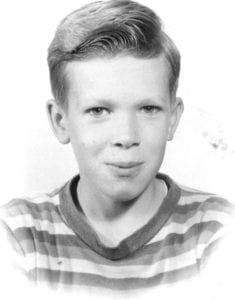
While the historian’s family tree has deep roots in the Three Village area, Tyler was born in Brooklyn at Methodist Episcopal Hospital in 1938. He said his parents moved back to their family home in Setauket when he was a year old. His father, a violinist, had moved to the city in hopes of finding work as a musician. When his father couldn’t find enough work, the family moved back, and they lived with Tyler’s grandmother until he was 11.
The historian said they soon moved to the family’s house on Main Street across from the post office where his mother lived until her passing in 2016 at 102 years old. After graduating from Setauket Elementary School, when it was open to students from kindergarten through ninth grade, he attended Stony Brook Boys School. He said his grandmother had written a letter to the school administrators when he was 3 or 4 asking them to hold a spot open for him. However, he said he didn’t like the school and then attended Port Jefferson High School for a year. The historian, who has written a number of books, admitted he was a lousy student, who didn’t even like history class because he said it felt like it was just about wars and dates.
“I wasn’t interested in school because it was too easy,” he said. “So, I read. I read voraciously.”
During his brief stint at Port Jefferson High School, he played in the school band with his now wife, Barbara, but he said they didn’t know each other well.
“She played the saxophone, and I played trumpet,” he said. “She didn’t like trumpet players because we always sat behind the saxophones.”
Tyler said he eventually attended and graduated from the military school Admiral Farragut Academy in Pine Beach, New Jersey, on the banks of the Toms River in 1957. He started dating Barbara in 1960 after they met once again at the Port Jefferson Yacht Club, where Tyler was running the club’s launch.
Tyler’s military education came into play when he joined the Navy. He served for two years and was a reservist for eight. The quartermaster, who worked on the USS Franklin D. Roosevelt, said he fell in love with travel while in the armed forces.
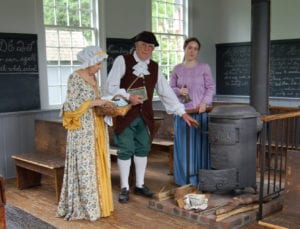
“I took advantage of every single chance I could get,” he said. “I went to Rome, Paris, Venice, Lake Como, Barcelona, Madrid, Greece.”
His time on the high seas though would soon be replaced with a career in the air. After he graduated from SUNY Farmingdale with an associate degree in photographic technology, and a short stint as a photo chemist for a photography manufacturing company, he decided to get his private and commercial pilot licenses. Tyler said he worked at MacArthur Airport for an air service, and about a year or two later he applied to the Federal Aviation Administration to be an air traffic controller — a job he held from 1968 until he retired Jan. 3, 2002.
Tyler and his wife have two daughters — Jen, who now lives in North Carolina with her husband, and Amy, who runs Amy Tyler School of Dance and Harbor Ballet Theater in Port Jefferson. They also have eight grandchildren.
The historian said he is currently focusing his research on the shipbuilding era, 1844–1880, and the Revolutionary War, especially the Setauket Culper spies. When it comes to his favorite spy, the historian said it’s Caleb Brewster, who carried messages from Benjamin Tallmadge in New York City to the spies on Long Island.
“[Brewster] is self-starting and a risk-taker, and he is fearless and a proven leader who takes care of his men and follows orders well,” Tyler said.
When it comes to reaching the milestone of 80, Tyler has simple advice for those who want to follow in his footsteps.
“Do things you enjoy and enjoy things you do,” he said.


